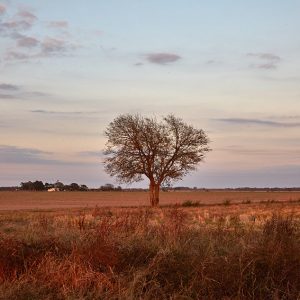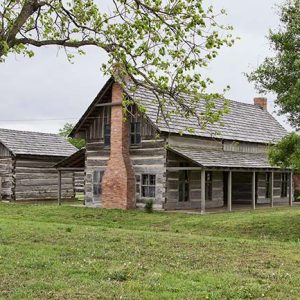calsfoundation@cals.org
Dumas (Desha County)
| Latitude and Longitude: | 33º35’13″N 091º29’30″W |
| Elevation: | 163 feet |
| Area: | 2.91 square miles (2020 Census) |
| Population: | 4,001 (2020 Census) |
| Incorporated: | April 28, 1904 |
Historical Population as per the U.S. Census:
|
1810 |
1820 |
1830 |
1840 |
1850 |
1860 |
1870 |
1880 |
1890 |
1900 |
|
– |
– |
– |
– |
– |
– |
– |
– |
– |
– |
|
1910 |
1920 |
1930 |
1940 |
1950 |
1960 |
1970 |
1980 |
1990 |
2000 |
|
519 |
1,124 |
1,669 |
2,323 |
2,512 |
3,540 |
4,600 |
6,091 |
5,520 |
5,238 |
|
2010 |
2020 |
|
|
|
|
|
|
|
|
|
4,706 |
4,001 |
|
|
|
|
|
|
|
Dumas of Desha County is in the Arkansas Delta, west of the Arkansas and Mississippi rivers. Dumas has long been a business and agricultural asset to the state of Arkansas and is a welcome oasis to travelers through the delta region.
Reconstruction through Early Twentieth Century
In 1870, William B. Dumas, a planter, merchant, and railroad surveyor of French descent, migrated to the area and bought acres of farmland from the Abercrombie Holmes family, which had bought it from the state. The settlement eventually was named for this early planter. The town continued to develop, primarily as a result of the extension of the Missouri Pacific Valley Line Railroad, which not only made possible an influx of settlers from other regions, cultures, and countries but provided a means for the primarily agricultural economy to ship its produce to market.
Cotton was the preeminent cash crop and economic engine that promoted Dumas to become, as early as 1922, “one of the active business centers of the county,” according to historian Dallas T. Herndon. Cotton production provided the incentive for the subsequent growth in the area, and sawmills and woodworking factories came as a result. The combination of the railroad and the Arkansas-Louisiana Highway made Dumas an important “trading and shipping point for a rich farming district.” A local legend has it that a Dumas plantation owner was purportedly the first person to sell one million dollars worth of cotton on the New Orleans Stock Exchange.
Farming continues to sustain the community and has allowed for the continued growth of business and industry, including dry goods, groceries, sawmills, cattle ranching, banking, lumber, wood products and hardware, and in more recent years, furniture factories and garment manufacturers. Farm crops diversified in due time and—in addition to cotton—rice, soybeans, and winter wheat became integral.
Dumas survived several floods of the Mississippi and Arkansas rivers. “Water covered Dumas in the 1916 flood. Boats were used to gain access to Lee Brothers store in Dumas during the 1916 flood,” according to the pictorial history, Images of the Past: A Pictorial History of Desha County, Arkansas, and the Southeast Arkansas Delta, which further notes that “Desha County’s greatest catastrophe was the 1927 flood, affecting a population and 26,684, and covering 478,000 acres, the largest number underwater in the state. The flood resulted in breaking in the levees along the south bank of Arkansas River and west bank of the Mississippi River north of the mouth of the Arkansas River.” During the Flood of 1927, water approached the town from the north, but the Kerch Canal between Dumas and the neighboring town north of Dumas, called Gould, saved the town. Images further notes that “Although much of Desha County was under water, Dumas for the most part was only surrounded by water.” Water encroached only to what is now Wolff Street. Merchants in town put their merchandise on scaffolds to protect their goods from rising waters.
The population has grown since William Dumas arrived, and the town is ethnically diverse. When Dumas was incorporated in 1904, Gus Waterman, a Jewish immigrant from Germany, became the first mayor and postmaster, and his grandson, Julian Waterman, became the first dean of the University of Arkansas School of Law.
In 1905, an African-American sawmill worker named Joe Woodman was hanged in Dumas for eloping with a white girl. In 1920, federal troops from Camp Pike were sent to Dumas to quell a feared “race war” in the community.
The first Dumas school began meeting in the 1890s in a one-room frame building on North Main, according to Carolyn Porter’s Dumas Centennial. The African-American community is an integral part of the social and economic development of the town. As in other areas, the African-American residents of Dumas endured segregation and later helped to promote integration and reconciliation. The first school for black children opened in 1898, followed by the Rosenwald School in 1919; the Dumas Colored High School, later named Reed High School, opened in 1949. Integration in Dumas occurred without major incident. Other races and cultures have also found a home in Dumas, with small percentages of Asians, Native Americans, Alaska natives, and Hispanics. Political scientist Adolph Reed grew up in Dumas in the 1920s.
World War II through Modern Era
One merchant, Haskell Wolff, in Dumas said that World War II brought hard times. His mother, Sadie Wolff, who was managing the family department store while the sons were away at war, bought any goods the sales person would let her have. She had no real choice or selection available and took any goods available.
Many boys of draft age left Dumas to fight in the war. Several were taken as prisoners of war. Joe Lee Smith “entered the U.S. Navy,” according to Images. General Jonathan “Skinny” Wainwright led a group of soldiers on the Bataan Peninsula of the Philippines. Urban Hopmann was among them and “received the Distinguished Service Medal and Silver Star of braver in the Philippine Campaign.” J. P. and Charles Dunn went with their parents “to Richmond, California, for work in the shipyards during World War II.” Haskell Wolff and other young Dumas men enlisted in the armed services during World War II, but most were drafted. Wolff received the Bronze Star, and E. C. Freeman received the Presidential Unit Citation and the Air Medal.
Journalist Charlotte Tillar Schexnayder and her husband, Melvin, purchased the Dumas Clarion in 1954 and ran it successfully for many years before selling it in 1998. Charlotte Schexnayder was also the president of numerous journalist associations and served in the Arkansas House of Representatives for fourteen years.
The center of the town has always run along Main Street, and businesses developed along both sides of the railroad tracks. Some of these have been mainstays for decades and, in some cases, almost a century. Dumas is today still mostly agricultural and business oriented. Theater is alive and well in town, and a new hospital is in the building stages. However, a tornado struck the town on February 24, 2007, destroying twenty-five homes and damaging dozens of others, as well as destroying twenty-five businesses. Following the tornado, area leaders took the opportunity to establish a new direction for the local economy and founded the Delta Technology Education Center, which opened in 2010 and offers courses for college credit, as well as non-credit courses and workforce training. The local Dante House was listed on the National Register of Historic Places in 2020.
Dumas has formed a communal identity around the song, “I’m a Ding Dong Daddy from Dumas,” and for decades, a billboard at the outskirts of town proclaimed Dumas “Home of the Ding Dong Daddy.” The song was copyrighted in 1928 by Phil Baxter, later recorded by Louis Armstrong, and further memorialized by Dick Powell in the 1937 Hollywood movie Hollywood Hotel. The townspeople firmly believe their town to be the origin of the song. They insist that Baxter, a traveling musician and songwriter from Texas, was inspired to write the song for the town when the band came through the area in the early 1920s to play for dances. Dumas, Texas, makes a similar claim.
Dumas annually hosts a festival called Ding Dong Days, which includes ceremonies in honor of its founder, as well as games, sports, theater, dancing, a fish fry, a pancake breakfast, train rides, and a parade. Recently, with great fanfare, the town combined the celebration of the centennial of its founding with Ding Dong Days. The centerpiece of the festival is the singing of the theme song and the selection and announcement of the Ding Dong Daddy and Ding Dong Mama of the Year. As early as 1928, a photo of the town baseball team bus carried the insignia, “Ding Dong Daddies from Dumas.” The communal identification with the song, still holding fast, is almost a century old.
Dumas made national headlines on March 19, 2022, after a gunfight erupted during an annual community event called Hood-Nic (short for “neighborhood picnic), which raises money for scholarships and school supplies for the underprivileged. The shooting killed one person and wounded twenty-six, including five children.
For additional information:
Biographical and Historical Memoirs of Southeast Arkansas. Chicago: Goodspeed Publishing Company, 1890.
Farabough, Mary Frances, compiler. Memories of Dumas. N.p.: 2002.
Herndon, Dallas T., ed. The Centennial History of Arkansas. Little Rock: The S. J. Clarke Publishing Company, 1922.
Images of the Past: Desha County, Arkansas and the Southeast Arkansas Delta. Marceline, MO: Heritage House Publishing Co., Inc., n.d.
Moneyhon, Carl H. “Delta Towns: Their Rise and Decline.” In The Arkansas Delta: Land of Paradox, edited by Jeannie Whayne and Willard B. Gatewood. Fayetteville: University of Arkansas Press, 1993.
Porter, Carolyn Kelley, et. al. Publication of the 1904–2004 Dumas Centennial: Ding Dong Days Celebration. N.p.: 2004.
Sally Wolff
Emory University
 Arkansas River
Arkansas River  Dante House
Dante House  Desha County Museum
Desha County Museum  Desha County Map
Desha County Map  Dumas Street Scene
Dumas Street Scene  Dumas Street Scene
Dumas Street Scene  Dumas Street Scene
Dumas Street Scene  Freeman's Esso
Freeman's Esso  Grand Prairie
Grand Prairie  Sam Terry House
Sam Terry House 




Comments
No comments on this entry yet.